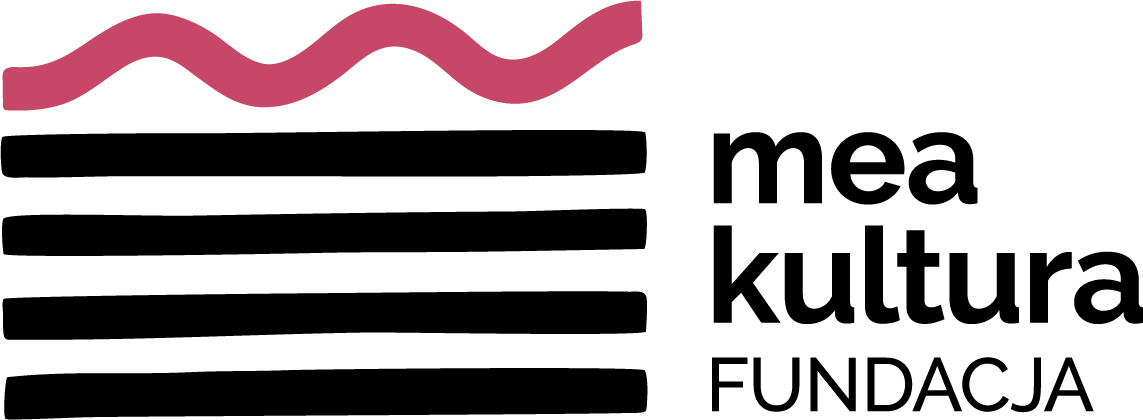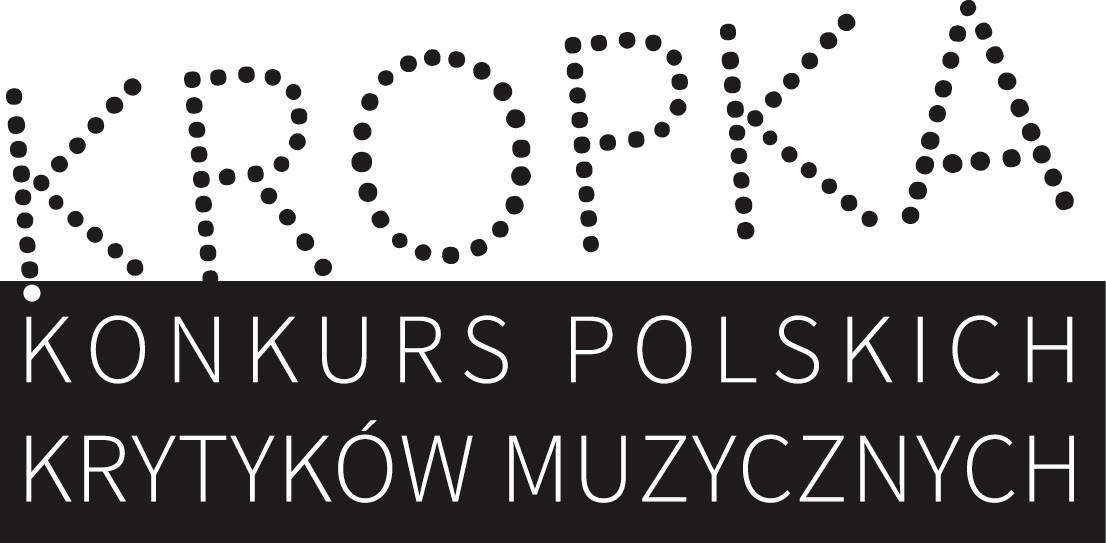1. The individual’s sense of fear creates a canon of new aesthetic (T. Adorno).
Shostakovich was one of the greatest composers of the 20th century, an artist, whose music was filled with subjective and dramatic irony that spoke to music lovers the world over. The popularity of his music beyond the borders of the USSR was the reason why the authorities created the image of Shostakovich as an adherent of the socialist system. This famous „creation” of Communism was adored, frequently for his compositions and the veneration which added prestige to national awards. Unfortunately, moments of triumph were followed by periods of torment. Shostakovich’s creativeness was branded as formalism and cosmopolitanism, which was in opposition to the cultural politics of the Soviet Union.
The composer, in order to survive and function as a creative artist in the times he had to live in, had to adjust his work to the „requirements” of his country. These concessions, though limiting his creative freedom, did not break with the main features of his style and retained the individuality of his artistic statement. Such artistic aspirations were a matter of priority for Shostakovich and though often in opposition to the opinions of „the authorities”, he did not relinquish them.
In this context he did not renounce his opinions on the brutality of events in the USSR at that time. Shostakovich was prepared to admit to the alleged „defectiveness” of his own work but could not remain indifferent. The reaction to the tragic reality that engulfed him is manifest in his music. The secret language of protest was demonstrated by the use of Jewish themes (both in music and text), which allowed for a flexible symbol of biographical and social issues. To understand fully the meaning of those compositions it is necessary to penetrate the political climate of those years in which anti-Semitism unofficially reigned.
2. It’s not enough that You love the Soviet authorities. They must love You (O. A. Pietrow).
Russian anti-Semitism was not the creation of communism, it’s roots trace back to the 15th century, when the authorities were fighting with pro-Jewish fractions. Up until the February Revolution in 1917, Jews were submitted to all sorts of programmes. Their hopes for a more dignified life gave birth to a belief in socialism, which in practice proved to be an illusion. According to all subsequent Soviet constitutions, including the one from 1977, encouraging racial or national discrimination, hostility to or humiliation of Jews, was considered a crime[1]. In reality, the politics of the country were completely different; in fact against any form of religion because the goal of the Soviet authorities was the pursuit of Jewish assimilation. This process was initiated by Stalin’s speech in 1925 when he stated that national cultures have got to have the opportunity for development, expansion and developing their own potential, which will create favourable conditions for joining them into one, common culture with one, common language[2]. This statement led to the situation in which all nationalistic emotions arising in the Soviet Union, bore the tone of racism[3].
In Autumn 1943 the politburo met in the Kremlin. The result of this meeting was a resolution recommending the increasing of wariness toward Jewish staff[4]. That was only the beginning to the widespread campaign against Jewish nationalism and cosmopolitanism. This situation was exacerbated by the establishment of Israel, which to the disappointment of Stalin, chose a pro-US orientation (despite the fact that the USSR had taken part in creating this country).
The 1940’s turned to be an unusually bloody decade for the Jewish community as the authorities searched for every possible pretext to consolidate Soviet justification of pogroms, allegedly creating a Soviet state for Jews in the Crimea.
The post-war period maintained the propaganda of a Jew as an ideologically undesirable person, a public enemy guilty of all social and economic failures and this became the unofficial ideology of the Soviet Union. Public opinion was shaped by publishing anti-Semitic novels, brochures and articles showing Jews as a specific, anti-social race, cunning and parasitic[5]. Whenever any forms of conspiracy took place, corruption or examples of insubordination toward the authorities, in the first instance people with Jewish names were held responsible[6].
Neither did the storm of condemnation of everything that was Jewish pass art by. Many composers and musicologists were accused of anti-patriotic activity and cosmopolitanism. The latter description became a synonym of Jewry in this period of time. At the beginning of 1949, four hundred writers, artists, musicians and other creators were arrested and subsequently executed in August 1952[7]. Stalin’s successor, Nikita Sergeyevich Khrushchev, also sentenced Jews to death. During his rule, the number of synagogues decreased from four hundred and fifty to sixty[8].
Under those hostile circumstances, the exploitation of Jewish leitmotifs by Dmitry Shostakovich was not only an act of supreme courage but also proof of the composer’s solidarity with the Jewish nation.
3. For all anti-Semites I’m like a Jew, because I’m in truth Russian (Y. Yevtushenko).
Shostakovich, although he wasn’t a Jew himself, often gave evidence of his dedication to the Jewish nation. In his family home, anti-Semitism was recognised as a shameful superstition not worthy of an honest, civilised man. It is well known that the composer dropped acquaintance with those friends, who were using anti-Semitic comments, because for him the attitude to Jewish people was a test of a human being’s value[9]. Thus, the composer as a sensitive man raised in the spirit of tolerance, for whom human dignity is not just an empty word, could not silently reconcile himself to the Jewish tragedy taking place around him. Among Jews, he had many friends and associates, such as: Wsielod E. Meyherold,[10] Izaak D. Glinkman, Leo O. Arnsztam, Mojsiej S. Weinberg, David. F. Oistrakh[11] and Maximilian Steinberg.
During this period, when Russians under the Stalin terror avoided every contact with Jewish people, Shostakovich was one, however, who didn’t refuse his assistance. He helped the Weinberg family, when Weinberg was in prison. In September 1943, Shostakovich signed a petition against dismissal due to racial discrimination of a professor of the Moscow Conservatory – Eugene Guzikov[12]. In 1948 he hosted Moshe Beregovsky, until the government overruled a decision to arrest this famous musicologist. Chentowa adds that Shostakovich asked about parole from prison for the composer Iogann Admoni, protested against Iosif Brodsky’s imprisonment and in his Moscow home had as a guest Mikhail M. Zoshchenko, at a time when the writer was on trial[13]. In 1948 the authorities issued an execution warrant for the great Jewish actor Solomon Michoels (1890-1948). The artistic world was shocked by such a brutal act. Shostakovich was brave enough to take part in the actor’s funeral, on which he said a few words of warning: Jewish sufferings are only the beginning, the end is going to be the suffering of all the intelligentsia[14].
Using Jewish themes in musical works had for Shostakovich a moral tone, built on the martyrdom of this nation[15]. The Jews’ fate was for him a metaphor of humanity’s lot; a symbol beyond nationalism, an icon of the world’s meanness, a proof of how defenceless man is[16]. This same defencelessness and hurt in man could in fact be found in Shostakovich himself. The suffering of Jews was for the composer a representation of his own situation, because many times he was also rejected and condemned – often as if an alien in his own country. Shostakovich tried to include all his thoughts and emotions in music, because he believed in the power of art, which is capable of killing the silence[17].
Moral reasons were not the only ones why Shostakovich decided to use Jewish motifs in his compositions. It was also the charm of Jewish folklore whose richness and uniqueness took possession of the composer’s artistic creativeness. Shostakovich was particularly interested in Jewish folklore as a special musical device. There exists an opinion, that Shostakovich’s interest in using Jewish folklore for composition, had been initiated by a biographical event. During the war in 1943, one of the most talented students of Shostakovich, Venyamin Fleishmann died – whose opera Rotschild’s Violin was based on Jewish themes. Shostakovich finished and arranged this opera, which was first of all for him, a stricte „score” connection with the Jewish idiom, especially with Jewish moduse[18].
Shostakovich explored his knowledge about Jewish folklore for dozens of years, as late as 1970 he studied carefully the Anthology of Jewish Folk-song[19], because this music was a special kind of inspiration for him. He could listen endlessly to Jewish melodies in regard to the variety of their subtle shades, which, as he said, can sound happy and tragic at the same time. This was after all, what made this music unusual and unique for him[20].
4. Talking to deaf people is pointless. Which is why I’m turning to those, who can hear, and only with them do I intend to talk, only with those people, that prefer music to words (D. Shostakovich).
Shostakovich’s interest in Jewish themes was not a temporary enchantment but a deep inspiration, which he used in a dozen works, created over a period of almost thirty years. To demonstrate the characteristics of these works I chose the following division:
1. Works using Jewish plots in line with Klezmer music
2. Works dealing with life and Jewish tradition
3. Plots of Jewish martyrdom in the 13th Symphony
1. The biggest number of works that contain Jewish themes can be found in the instrumental works group, whose music idiom presents a modal, metro-rhythmic and melodic union with believers of Judaic traditional folklore. Dmitry Shostakovich used the stylized idiom of Jewish music in several of his instrumental works:
a) Piano Trio Op. 67 (part IV – Allegretto) was composed to commemorate Shostakovich’s best friend, Ivan Sollertynski, who unexpectedly died in February 1944[21]. A Soviet critic accused Sollertynsky of having a negative influence on Shostakovich, which resulted in the formalism of his music. The Jewish themes contained in the tragic final, according to Joachim Braun, have got to show evil, death and the forces that shaped the life of Jews and Sollertynsky[22]. This work can be also interpreted as Shostakovich’s comment on the information about Jewish pogroms during World War II.
b) Violin concerto Op. 77 (1948) is dedicated to David Fyodorovich Oistrakh, an outstanding Soviet violinist, whose origin was Jewish[23]. Perhaps that was why Shostakovich inserted components of Klezmer music in the second part of this work. Due to Jewish discrimination, the premiere of this composition only took place in 1955[24].
c) IV Violin Quartet Op. 83 (part IV – Allegretto, 1949) according to Shostakovich in the Volkov book, the „Jewish” theme used in this work was the composer’s comment about Stalin’s regime, which during 1948-49 killed thousands of Jews[25].
d) 24 Preludes and Fugues for piano Op. 87 was created in 1950 under the influence of celebrating The Year of Bach. In several Fugues and Preludes (f. ex. Fugues no. VIII, XVI and XXIV) we can hear Jewish motifs, but the connotations are not as obvious for listeners as in other instrumental works.
e) Cello concerto Op. 107 (part IV – Allegro con moto, 1959). This composition was dedicated to Mstislav Rostropovich,[26] Shostakovich’s best friend. Rostropovich’s stance was often in opposition to the country’s official politics, which regarded him as a dissident and unwelcome person in USSR[27]. Rostropovich’s integrity and persecution by the Communist Authorities evoked in Shostakovich an empathy with the Jewish nation. Perhaps this is the reason, why he used the Jewish theme in the Cello concerto.
f) VIII Violin Quartet Op. 110 called the Autobiographical, is dedicated to the memory of World War II victims of fascism. In the second part of the work, which has a toccata[28] character, a Jewish theme taken from the trio arises in Op. 67, with the composer’s identificatory theme (DSCH). This composition was created after Shostakovich’s admission to the Party ranks, which was for the composer synonomous with death (during this time he even thought about suicide)[29].
The features of Jewish music included in the works mentioned above were a creative impulse for Shostakovich, fusing elements presenting an immanent characteristic for Askenazy folklore and elements which appealed to Russian music tradition in the individual composer’s style.
In such instrumental works there are several features of a Jewish idiom, such as: the ostinato accompaniment (Piano Trio Op. 67, no. 67), characteristic pointed rhythms (or pattern: eight note and two sixteen notes); (Fugue no. XVI Op. 87, bars 11-14), syncopation (Violin Concerto Op. 77, nr 41), starting the theme from the head of the bar, säufzermotive (sigh motifs)[30]. Shostakovich often used steps of second intervals, which are typical for the composer’s technique and also for Jewish music (8th Violin Quartet, no. 22). On the basis of second motifs a melodic arrangement arises, which sounds like chromatic melisma or quasi-oriental decorative figures[31] (8th Violin Quartet, nr 23). Characteristic features for both Jewish and Russian music tradition are: making use of modalisms in preference to minor scales, stressing the weak part of the bar (Cello Concerto op. 107, no. 66), repeating motif figures[32]. For Shostkovich, modal scales in most of his „Jewish” works only make up a starting point for creating a new sound arrangement. Chromatic changes in the modal scale produce characteristic intervals for Jewish music, especially raised and augumented second (Violin concerto Op. 77, no. 44). He also makes use of augumented third in the Phrygian scale, which created this Jewish modus called in Jidisz – freigish[33] (Piano Trio Op. 67, no. 72). Except for 24 Preludes and Fugues, all compositions mentioned above were created for stringed instrument domination, consistent with the musical practice of Klezmer groups. As well, the coloring effects connected with techniques of play, suggest associations with Klezmer music, f. e. glissando (Cello Concerto Op. 107, no. 65) or pizzicato (Piano Trio Op. 67, no. 1).
2. The cycle of eleven songs Op. 79 From Jewish Folk Poetry (for soprano, tenor with piano accompaniment) and the first episode from Four Monologues to Pushkin’s Words Op. 91 with piano, belongs to the vocal-instrumental compositions relating to the life and tradition of the Jewish nation[34].
From Jewish Folk Poetry was created in the „black” year 1948, in the supreme period of the Soviet authorities attack on everything that had something in common with Jewry. Writing his cycle, Shostakovich wanted primarily to protest against attacking the Jewish nation in everyday Russian conversation[35]. The poetry of the first eight songs is related to the Jewish tradition. These poems, which are dedicated to old times, show genre scenes from the life of poor Jewish families, which has a global atmosphere that is deeply depressing[36]. The dialogue form, typical for that tradition of Jewish song (antiphonal tradition from the synagogue), appears in song number: 1, 2, 4, 5 (dialog: voice with piano) and 7.
It is assumed that Shostakovich had planned the public presentation of his work, because later he added to the first eight pieces three less successful propaganda songs, which finished the work in an optimistic, politically correct way. This can be perceived as an expression of acknowledgement for the system, or as it’s parody[37]. In spite of the above, Shostakovich did not opt for the presentation of this cycle until 1955 (which nonetheless did not protect the composer from subsequent unpleasantness).
In the cycle From Jewish Folk Poetry, Shostakovich integrated his original style as a composer with the use of a generalised idiom of Jewish music (which occurred also in his instrumental works). He used syncopation, characteristic for the Jewish tradition, which appear in all songs except number 2 and 10, and typical Klezmer accompaniment[38] (songs no. 1, 2 ,3, 4, 7, 8). The scales, which occurred in the cycle, follow from Shostakovich’s individual and flexible attitude to modality and tonality. The consequence of using flat and sharp notes, superimposed on a minor-major scale system resulted in a specific tone, suggestive in its melodic texture in regard to Jewish music. This type of alternation determines a characteristic Jewish music interval like the augmented second (song no. 7, bars: 8, 9, 16, 17, 29, 30, 37, 38, 64, 65). Intervals of seconds (small and large) prevail in the melodic continuum, from which is present in every part of the cycle. This predilection for the descending second[39] (an integral element of Jewish music), expresses meaning in illustrating sad emotions, which pass throughout the work.
The first Monologue Otrywok from Op. 91, presents a similar expression of climate as does the cycle From Jewish Folk Poetry. The significance of Pushkin’s poem, lies in its themes of poverty, sadness and depression. In spite of the thematic connection to Op. 79, Otrywok does not include many characteristic elements for Jewish music at the melodic level. The composition is ascetic in form and expression and brings this piece closer to the XIII Symphony „Babi Jar” (from a melodic point of view).
3. The subject of martyrdom of Jews appears in the first part of the XIII Symphony „Babi Jar” Op. 113 (1962) for solo bass, choir bass [40-100] and orchestra. The work contains five separate parts, based respectively on five poems by Yevgeny Yevtushenko. The first part – Babi Jar – because of its dark subject matter, is not only chiefly associated with the whole work but also lays it foundation. It’s tragic undertone was effected by the suggestiveness of its poetry, speaking of the massacre carried out on the Jewish nation during World War II. In the September of 1941, Nazis started mass executions of the Kiev population. There were around a hundred thousand people (also Soviets and Ukrainians) shot. The victims were led to the place of murder called Babi Jar. After the war, when the Soviets did not agree to the building of a monument in that place, Babi Jar became for Soviet Jews a „Mecca” of unofficial pilgrimage[40] and a symbol of Jewish martyrdom.
It is not hard to guess that Shostakovich’s work did not take the national dignitaries’ fancy. Objections were not only raised by the theme of poetry but also the name of the poet – at that time Yevtushenko was an extremely controversial character. He took up the theme of anti-Semitism, which was a taboo hitherto avoided in the USSR. The poem and the whole Symphony alike were the subject of pernicious dispute and criticism. The premiere, as always, was not performed without trouble: the singer received a warning from the KGB and to minimise attendance, the police called the place where the concerto was taking place and forbade the publication of the text in the program[41].
The lyrics of Babi Jar terrify listeners by their subject matter. Yevtushenko presents the martyrdom of the Jewish nation with shocking directness, which has an influence on the tragic and solemn significance of the piece. The writer identifies himself with Jewish suffering by describing the pain of specific (everyday) people, such as Ann Frank or Alfred Dreyfus. He thereby pays homage to thousands of nameless victims. Yevtushenko’s poem possesses a narrative character, which brings it nearer to prose. It seems that in such an unambiguous and emotionally satiated text, including Jewish elements at the musical level wasn’t necessary[42]. As the sense of words is more than enough in its expression and deepness of significance, in his XIII Symphony, Shostakovich used the language of composition, which referred to the Russian tradition (especially to the Modest Musorgsky style). The compositional material included many more expressions characteristic of Russian lyrics and ritual songs than Jewish folklore. The message of the words has an influence on the character of the music for the purpose of articulating their meanings[43]. Shostakovich’s desire for attaining an unanimity of words (intonation) with music is reflected in the usage of a recitative melody. This procedure focuses the listener’s attention on the poetics of the words as well as simplifying its instrumental texture, when the vocal part occurs[44].
The XIII Symphony was one of the favourites of Shostakovich. The message of that composition presents the essence of the composer’s ideological manifesto, a kind of testimony. The XIII Symphony synthesises all the plots, which Shostakovich used in his compositions so many times: war, race discrimination, injustice, individual’s suffering, morality of the nations and human values.
5. Pessimism is an alienated form of despair (E. Fromm).
In Shostakovich’s life and legacy it is not difficult to find such works and behaviour that show his servility to the USSR authorities[45]. But when we scrutinize those compositions and actions, which constitute proof of his dissent, we may say that his attitude to the reality immediately around him was one of the main forces responsible for the composer’s creativeness. Referring to Erich Fromm’s concept, we can say that the social and political situation lead to the creation in Shostakovich of a so-called reflex conformism,[46] which is characterised by adopting a personality that other members of society expect to see. Probably, some of Shostakovich’s compositions and statements come from this motive, an apologia for communism.
On the other hand, an individual has their own needs following on from the existence of social conditions. According to Fromm, this includes i.e.: avoiding isolation and moral seclusion,[47] having a high self-esteem and the desire of being unique. All human beings can attain these needs either by individual creative efforts, or through identification with another person or group[48]. Shostakovich could meet all these conditions because of his ambition and outstanding talent, and also because of his desire for identification with the group – the Jewish nation (which arose from moral solitude). On the basis of this canvas the composer created a number of works, which are his private voice in the matter of striving for truth and justice.
6. Shostakovich’s music is the soul of our nation (G. Vishnevskaya).
Shostakovich’s works, in which he used Jewish plots, are one of the most important of all his output. Most of them had to wait many years for their first performance. From among his works the „Jewish” compositions are distinguished by an exceptional kind of expression and richness of interpretation, which can be seen as the hidden language of resistance, discord, passing through indirectly to the consciousness of listeners[50]. In Krzysztof Meyer’s opinion „[…] the composer become the conscience of a generation, which lived in the hell called Stalinism […]. Humiliated so many times, accused of many sins, including vilification of the homeland (in the thirties, one Kiev newspaper wrote: „The composer Shostakovich, well-known enemy of our nation, arrived in our city”), through his music he expressed suffering, violence, brutality, anger, fight, good and evil and hope.[51]
There also exists a controversial theory by some American musicologists claiming that Shostakovich inserted the melodies based on Jewish folklore because he believed that Stalin liked them[52]. This absurd statement should be treated as a kind of curiosity, allegedly testifying to the superficiality of Shostakovich and the popular claim that he was representative of the mindless adherents of communism.
In conclusion, I would like to quote the words of Miloš Forman, who said that censorship in a totalitarian country was not the worst limitation. For an artist, far more dangerous was self-censorship[53], which caused a break with the honesty of constructive creation, warping consciousness, leading to living life in hypocrisy. Shostakovich did not give up this destructive mode and that is why all of his works containing Jewish themes are the chronicle of thoughts and feelings of the composer, ultimately the truth about himself. All this, it can be argued, decides the emotional perception of his works regardless of the period and the nationality of the listeners.
______________
[1] N. de Lange, Encyklopedia Żydowska, cycle: Wielkie kultury świata – Żydzi, Warsaw 1996, p. 192.
[2] N. de Lange, op. cit. p. 192.
[3] J. Smaga, Narodziny i upadek imperium ZSRR 1917-1991, Cracov 1991 p. 187-190.
[4] J. Smaga, op. cit. p. 187-190.
[5] Ibidem.
[6] Ibidem.
[7] J. Cang, The Silent Millions, A History of the Jews in the Soviet Culture: A Historical Survey, in: Jews in Soviet Culture, ed. J. Miller, London 1984, p. 19.
[8] P. Johnson, Historia Żydów, Cracow 1996, p. 608-609.
[9] S. Voklkov, Świadectwo. Wspomnienia Dymitra Szostakowicza, Warsaw 1989, p. 140-141.
[10] G. Vishnevskaya, Galina. Historia mojego życia, Poznan 2000, p. 203.
[11] I. MacDonald, Naive Anti-Revisionism. The Academic Misrepresentation of Dmitry Shostakovich, in: A. B. Ho, D. Feofanov, Shostakovich Reconsidered, London 1990, p. 697-698.
[12] I. MacDonald., op. cit. s. 693.
[13] Z. Chentowa, Shostakovich: Legendy i Pravda, s. 6, in: A. B. Ho, D. Feofanov, Shostakovich…, op. cit. s. 222.
[14] J. Braun, Shostakovich’s Song Cycle „From Jewish Folk Poetry. Aspects of Style and Meaning„, in: Russian and Soviet Music, ed. M. Brown, Ann Arbor, 1985, p. 261.
[15] S. Volkov, op. cit. p. 140-141.
[16] Ibidem.
[17] N. Lebrecht, The Jewish Cronicle, in: Dmitri Shostakovich and other Russian Composers Discussion List <DSCH-L@LISTSERV.UH.EDU>, 1999.
[18] J. Braun, The Double Meaning of Jewish Elements in Dimitri Shostakovich’s Music, „Musical Quarterly”, 1985 vol. 7, p. 72.
[19] J. Braun, Jews in Soviet Music, in: Jews in Soviet Culture, ed. J. Miller, London-New Brunswick, op. cit. p. 87.
[20] S. Volkov, op. cit. s. 140-141.
[21] L. Hakobian, Music of the Soviet Age 1917-198?, Stockholm 1998, p. 187.
[22] J. Braun, The Double…, op. cit. p. 76.
[23] J. Braun, Jews in Soviet Culture, op. cit. p. 76.
[24] L. Hakobian, op. cit. p. 205.
[25] S. Volkov, op. cit. p. 141.
[26] A. B. Ho, D. Feofanov, Shostakovich …, op. cit. p. 122.
[27] A. B. Ho, D. Feofanov, Shostakovich…, op. cit. p. 372.
[28] According to Richard D. Golianek, joining this quote with toccata motifs decides in imbuing the Quartet with demonical and infernal traits. R. D. Golianek, Dramaturgia kwartetów smyczkowych Dymitra Szostakowicza, Poznan 1995, p. 168.
[29] L. Lebedinski, E. Wilson, A Life Remembered, London 1994, p. 340-341, in: D. Redepenning, And Art Made Tongue-tied by Authority Shostakovich’s Song Cycles, „Shostakovich Studies”, ed. D. Fanning, Cambrige 1995, p. 210.
[30] These motives are similar to the Jewish descending „iambic prime”. This is an Alexander Dolzhansky term for a series of primes with the first accent of each prime on the weak beat. J. Braun, The Double…, op. cit. p. 72.
[31] R. D. Golianek, op. cit. p. 141.
[32] R. D. Golianek, op. cit. p. 138.
[33] J. Braun, The Double meaning…, op. cit. p. 71.
[34] In 1963 Shostakovich originated the orchestral version of that cycle (op. 79a).
[35] N. Lebrecht, op. cit.
[36] K. Meyer, Dymitr Szostakowicz i jego czasy, Warsaw 1999, p. 218.
[37] Evidence for that are: the harmonic changes, less often the appearance of a descending second movement and characteristic Jewish accompaniment. Under the influence of these changes, the Jewish property of melodies has been lost. J. Braun, The Double…, op. cit. p. 74.
[38] Shostakovich contrasted the melodic part with an ostinato part in the accompaniment. In such types of structure, the most characteristic is the octave’s strengthening of individual layers. R. D. Golianek, op. cit. p. 65.
[39] M. Szulc, 11 pieśni „Z żydowskiej poezji ludowej” op. 79 Dymitra Szostakowicza – próba analizy, Master Degree Thesis, Music Academy, Poznan 1991, p. 286-288.
[40] J. Braun, The Double meaning…, op. cit. s. 76.
[41] N. Lebrecht, The Jewish Cronicle, reprint: Dmitri Shostakovich and Other Russian Composers, Discussion List, < dsch-l@listserv.uh.edu>, 1999.
[42] J. Braun, The Double…, op. cit., p. 77.
[43] M. P. Musorgski, Izbrannyje pisma, Moskwa 1953, p. 11.
[44] For example, Shostakovich in a special way emphasized the word „anti-Semite”. Usually the word is placed in the high register of vocal voices. The melody narrows down to repetition of emphasized tones.
[45] E. g. 1948 – music to the movies The Young Guard (Molodaya gvardiya) – 1948, Michurin – 1949, The Fall of Berlin (Padeniye Berlina)- 1949, oratorio Song of the Forests (Pesn’ o lesakh) – 1949, cantata The Sun Shines on our Motherland (Nad rodinoy nashey solntse siyayet) – 1952.
[46] J. Strelau, Psychologia. Podręcznik akademicki. Psychologia ogólna, Gdańsk 2000, p. 621-622.
[47] Ibidem
[48] C. S. Hall, Teorie osobowości, Warsaw 1994, p. 164.
[49] G. Vishnevskaya, op. cit., p. 359.
[50] J. Braun, The Double…, op. cit. p. 78-79.
[51] K. Meyer, op. cit. p. 235.
[52] N. Lebrecht, op. cit.(dsch-l@listserv.uh.edu)
[53] M. Forman statement from documentary movie Cold War, USA, part XIV (Red Spring. The sixties).










